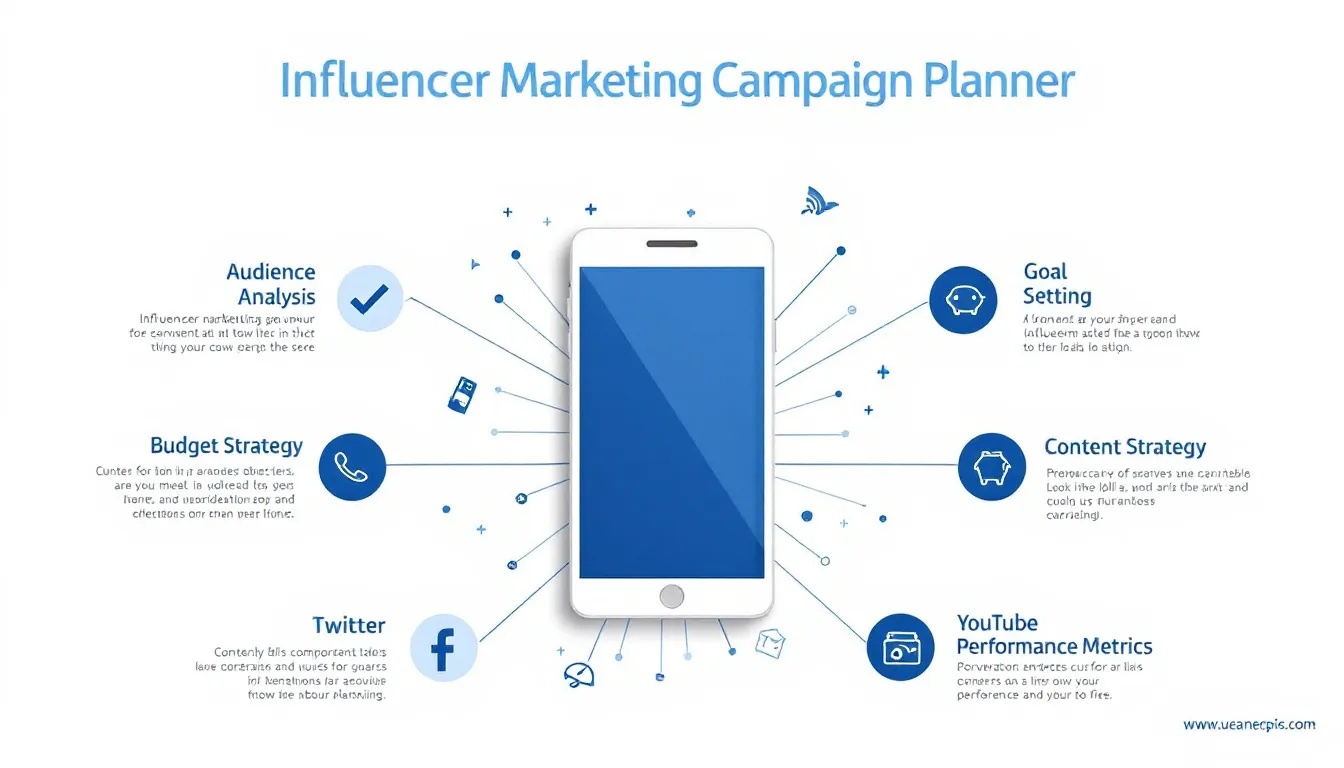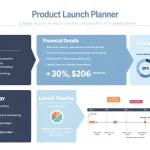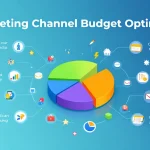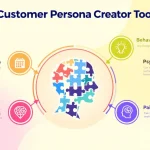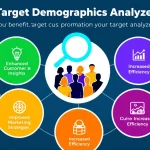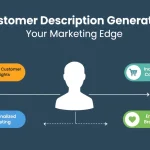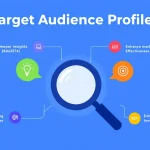Influencer Marketing Campaign Planner
Is this tool helpful?
How to Use the Influencer Marketing Campaign Planner Effectively
The Influencer Marketing Campaign Planner is designed to help you create a comprehensive strategy for your product launch or feature release. Here’s a detailed guide on how to use each field effectively:
- Product/Feature Name: Enter the specific name of your product or feature. For example: “EcoFresh Smart Water Bottle” or “Mindfulness Plus Meditation App”
- Target Audience Description: Detail your ideal customer profile with demographics, interests, and behaviors. Example inputs:
- “Tech-savvy millennials aged 18-34 who are environment-conscious and actively use reusable products”
- “Working professionals aged 30-50 interested in mental wellness and stress management”
- Campaign Goals and Objectives: Specify measurable targets for your campaign. Example inputs:
- “Generate 50,000 social media impressions and achieve 2,000 pre-launch signups within two weeks”
- “Reach 250,000 Instagram story views and drive 5,000 app downloads in the first month”
- Budget Range: Input your available marketing budget in USD
- Industry/Niche: Specify your market segment for targeted recommendations
Understanding Influencer Marketing Campaign Planning
Influencer marketing has become a cornerstone of successful product launches in the digital age. This tool helps brands strategically plan their influencer collaborations to maximize impact and ROI during crucial launch periods.
Core Components of Effective Campaign Planning
- Audience alignment analysis
- Goal-setting framework
- Budget allocation strategy
- Content planning blueprint
- Performance metrics definition
Benefits of Using the Influencer Marketing Campaign Planner
Strategic Advantages
- Data-driven influencer selection
- Optimized budget allocation
- Enhanced campaign coherence
- Improved ROI tracking
- Better risk management
Operational Benefits
- Streamlined planning process
- Standardized campaign structure
- Clear performance benchmarks
- Improved stakeholder communication
Problem-Solving Capabilities
Campaign Optimization Formula
The tool uses sophisticated algorithms to optimize influencer selection and budget allocation:
$$ \text{Campaign Impact Score} = (\text{Audience Match} \times 0.4) + (\text{Engagement Rate} \times 0.3) + (\text{Budget Efficiency} \times 0.3) $$ROI Calculation
$$ \text{Expected ROI} = \frac{(\text{Projected Revenue} – \text{Campaign Cost})}{\text{Campaign Cost}} \times 100 $$Practical Applications and Use Cases
Case Study 1: Tech Product Launch
A smart home device company used the planner for their new security camera launch:
- Product: SmartGuard Pro Camera
- Target: Homeowners aged 35-55
- Budget: $50,000
- Results: 200% ROI through strategic micro-influencer partnerships
Case Study 2: Lifestyle Brand Extension
A wellness brand leveraged the tool for their subscription service launch:
- Product: Wellness Box Monthly
- Target: Health-conscious females, 25-40
- Budget: $30,000
- Results: 15,000 waitlist signups pre-launch
Strategic Implementation Guidelines
Timeline Development
- Pre-launch phase (4-6 weeks)
- Launch week activities
- Post-launch engagement (2-4 weeks)
Content Strategy Framework
- Teaser content
- Launch announcements
- Tutorial/demonstration content
- User testimonials
Frequently Asked Questions
General Questions
Q: What types of products work best with influencer marketing campaigns?
A: Any product or service can benefit from influencer marketing when properly aligned with the right creators and audience. Consumer products, lifestyle services, and tech innovations typically see strong results.
Q: How far in advance should I plan my influencer marketing campaign?
A: Ideally, begin planning 2-3 months before your launch date to allow time for influencer selection, content creation, and coordination.
Q: What metrics should I focus on for measuring success?
A: Key metrics include engagement rate, reach, conversions, click-through rates, and sales attribution from influencer-specific codes or links.
Strategy-Specific Questions
Q: Should I work with multiple influencers or focus on one main partnership?
A: This depends on your budget and goals. Multiple influencers can provide broader reach, while a single partnership allows for deeper integration and storytelling.
Q: How do I ensure brand message consistency across multiple influencers?
A: Develop a comprehensive brief with key messaging points, brand guidelines, and campaign objectives that all influencers must follow.
Q: What content formats drive the best results?
A: Video content typically generates the highest engagement, particularly authentic, behind-the-scenes looks at product usage and benefits.
Budget-Related Questions
Q: How should I allocate my influencer marketing budget?
A: A general rule is 70% for influencer fees, 20% for content production support, and 10% for promotional activities and contingencies.
Q: What’s the typical ROI for influencer marketing campaigns?
A: While results vary, successful campaigns often see ROI between 500-1000% when properly executed with well-matched influencers.
Best Practices for Campaign Success
Influencer Selection Criteria
- Audience demographic alignment
- Content quality and consistency
- Engagement rate analysis
- Previous campaign performance
- Brand value alignment
Content Guidelines
- Authentic storytelling approach
- Clear value proposition communication
- Multiple content formats utilization
- Strategic call-to-action placement
- Consistent branding elements
Important Disclaimer
The calculations, results, and content provided by our tools are not guaranteed to be accurate, complete, or reliable. Users are responsible for verifying and interpreting the results. Our content and tools may contain errors, biases, or inconsistencies. We reserve the right to save inputs and outputs from our tools for the purposes of error debugging, bias identification, and performance improvement. External companies providing AI models used in our tools may also save and process data in accordance with their own policies. By using our tools, you consent to this data collection and processing. We reserve the right to limit the usage of our tools based on current usability factors. By using our tools, you acknowledge that you have read, understood, and agreed to this disclaimer. You accept the inherent risks and limitations associated with the use of our tools and services.
